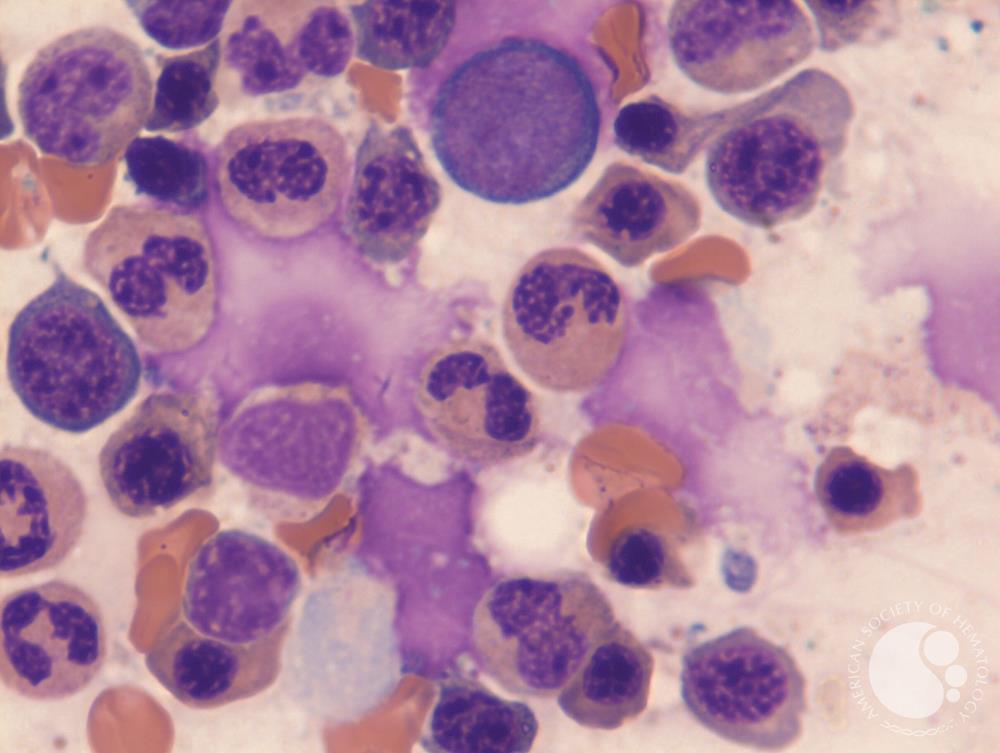
- Center on Health Equity & Access
- Clinical
- Health Care Cost
- Health Care Delivery
- Insurance
- Policy
- Technology
- Value-Based Care
Authors Support Trials of Triplet Therapy in Higher-Risk MDS
Given the likelihood of MDS to progress to acute myeloid leukemia (AML), the authors state, “There are certain settings where ‘AML-like’ therapies are appropriate in MDS, particularly given our evolving understanding of the overlapping biology of these malignancies.”
Standard therapies used to treat higher-risk myelodysplastic syndrome (MDS) fall short in keeping patients in complete remission and do not achieve survival rates on par with other advanced malignancies, say authors of a review article in Clinical Hematology International in which they endorse current efforts to explore new agents in doublet and triplet combinations.
Given the likelihood of MDS to progress to acute myeloid leukemia (AML), the authors state, “There are certain settings where ‘AML-like’ therapies are appropriate in MDS, particularly given our evolving understanding of the overlapping biology of these malignancies.”
“That said,” they continue, “a great deal more experience is needed before triplet therapies can become a reality for routine MDS care.”
The article discusses both the case for triplet therapy and outlines a list of 15 trials now under way examining triplet therapy in MDS.
Higher-risk MDS is characterized by “deep cytopenias, increasing blasts, and poor risk cytogenetic or molecular alterations,” the authors say, and patients with this type of disease are more likely to have poor overall survival and more likely to progress to AML within a few months to a few years after initial diagnosis. For these patients, the authors write, the goal of therapy should focus on improving both the quantity and quality of life after diagnosis.
MDS with ring sideroblasts | Image credit: Girish Venkataraman, MD, MBBS; ASH Image Bank

Treatments for these patients include those “that alter the natural course of disease,” the authors write, such as the DNA methyltransferase inhibitors azacitidine or decitabine.
However, the authors note, real-world evidence shows a median overall survival of only 11 to 19 months on these drugs among patients with higher-risk MDS. “Furthermore, there is no appreciable tail at end of survival curve following [DNA methyltransferase inhibitors] without transplantation, and within 5 years nearly all patients will have died, prompting ongoing urgent need for new therapeutics in this space,” they write.
Typically, triplet combinations involve combining agents with venetoclax or azacytidine, and the authors also discuss whether venetoclax and azacytidine should be the default doublet to combine with new agents in upcoming trials. Such trials, they write, may be testing whether azacytidine and venetoclax “is better utilized in the frontline (during MDS diagnosis) or second line (once they have AML).”
Of course, use of triplet therapy has pros and cons, which the authors discuss. On the plus side is the potential for both higher response rates and deeper, higher quality responses, as well as the opportunity to offer a bridge to transplant and, potentially, improved survival. The downside is the possibility of increased toxicity, higher costs, and increased need for supportive care. And, by using more therapies in a triplet, the patient exhausts salvage options in the event of relapse.
The authors suggest that clinical trialists can look to other blood disorders, such as multiple myeloma, for guidance on developing studies that add new agents to existing backbone regimens.
“New therapies in MDS are desperately needed but also require considerations particular to this unique patient population,” they write.
Reference
Brunner AM, Platzbecker U, DeZern AE, Zeidan AM. Are we really ready for triple therapy in higher-risk MDS? Clin Hematol Int. 2023;5(4):88301. doi:10.46989/001c.88301
2 Commerce Drive
Cranbury, NJ 08512
AJMC®
All rights reserved.